Sigiriya, also known as Lion Rock, is an ancient castle located in the center of the island nation of Sri Lanka, on a rocky plateau 370 m above sea level. The Sigiriya rock plateau was formed after a volcanic eruption with a height of more than 200 m above the forests below. The landscape is an absolute harmony between natural beauty and human creativity.

Sigiriya is one of the oldest fortresses in Sri Lanka.
On this flat Sigiriya rock plateau lies the ancient city of Sigiriya, the capital built by King Kassapa I (448 - 495) in the 5th century. The royal palace was built on the rock peak, considered inviolable, and decorated with colorful frescoes. After Kassapa I's death, the palace was used as a Buddhist monastery.
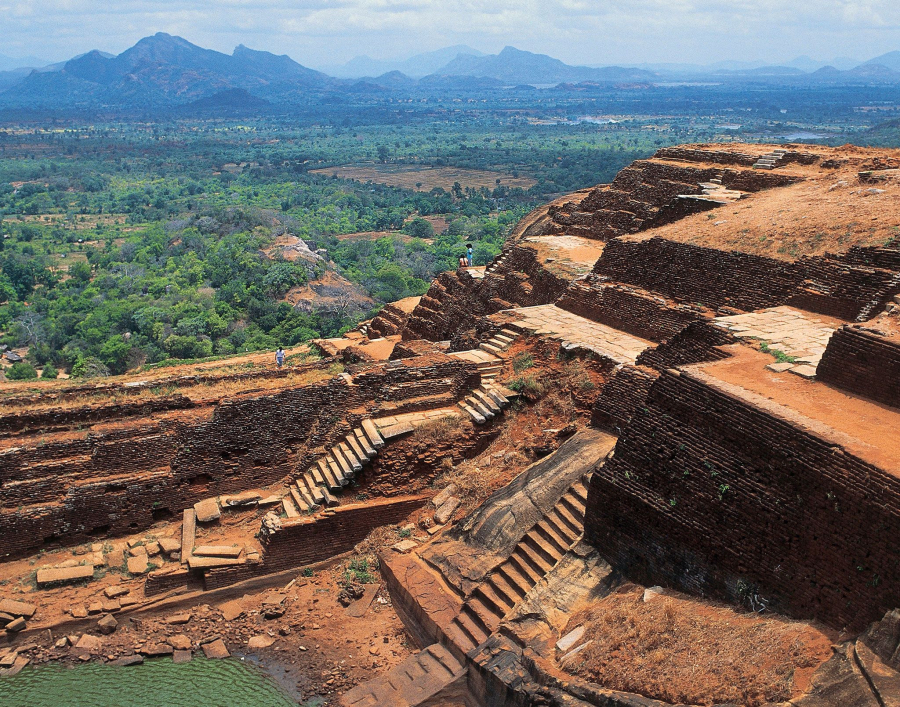
Sigiriya is a unique witness to the civilization of Ceylon during the reign of King Kassapa I.
The impressive remains of this ancient capital still exist today with its complex system of fortresses, surrounded by terraced gardens, promenades, ponds, canals, fountains and stone sculptures, now in ruins due to its isolation from the outside world for hundreds of years. The main entrance of the palace is located on the north side of the rocky plateau, designed as a giant stone lion, the legs of which still exist today, however the front part of the body has been destroyed by time. Because of the stone lion statue, the place is called Sigiriya, derived from Sihagri which means lion.
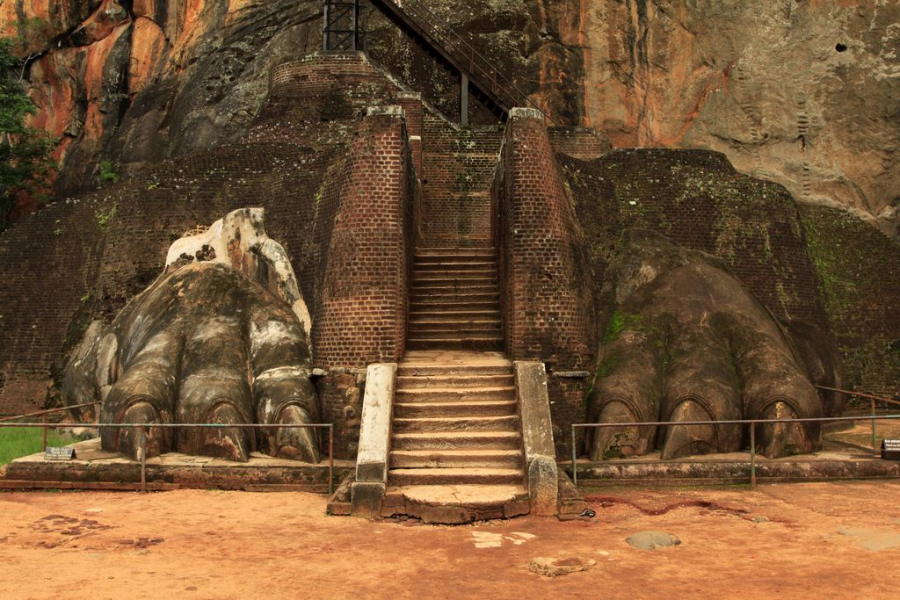
At the entrance to the fortress are two giant lion paws.
The architectural works and gardens in Sigiriya, the ancient artisans used extremely unique techniques and technology in the process of making. The construction of fortresses on the rocky plateau over 200 m high was a pinnacle technique, advanced compared to that era.

The gardens of Sigiriya are the oldest in the world.

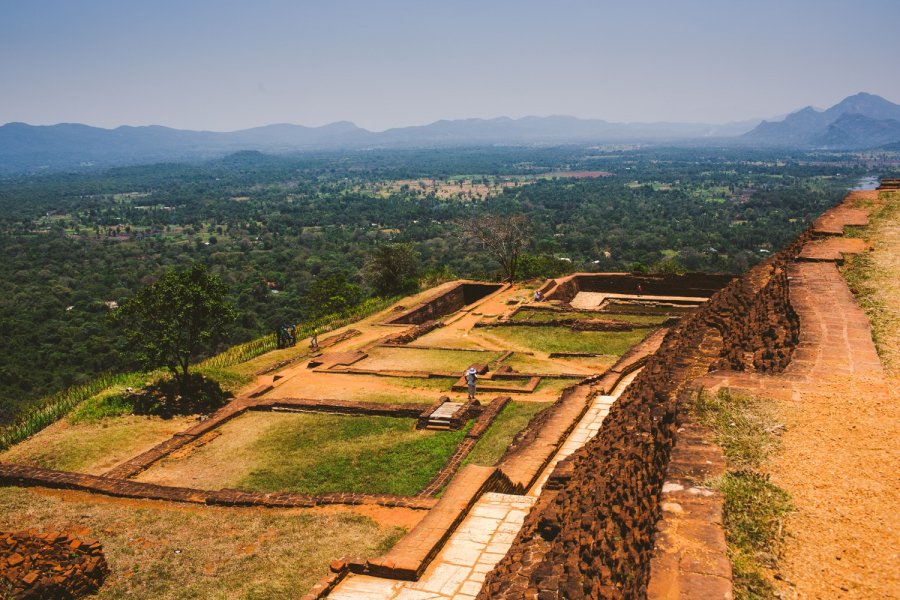
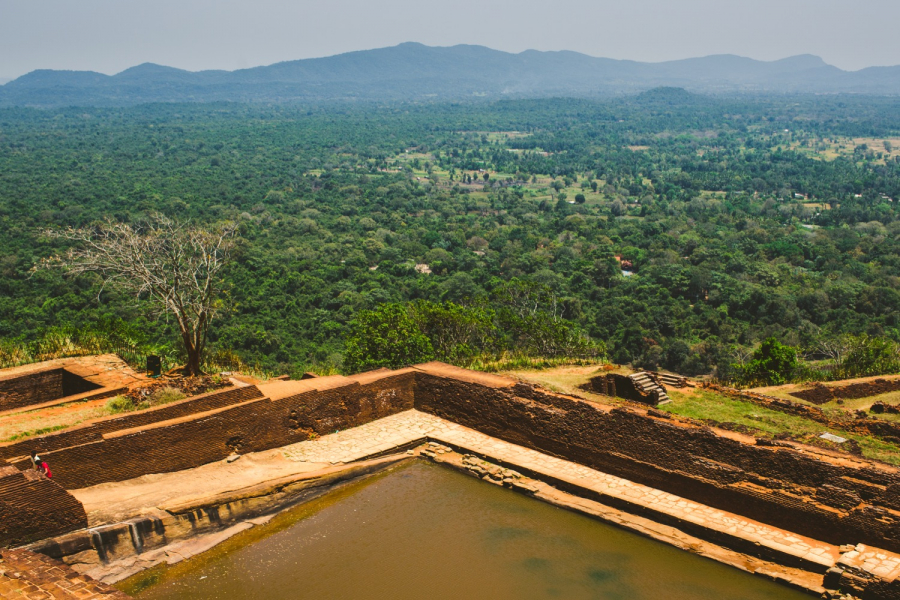
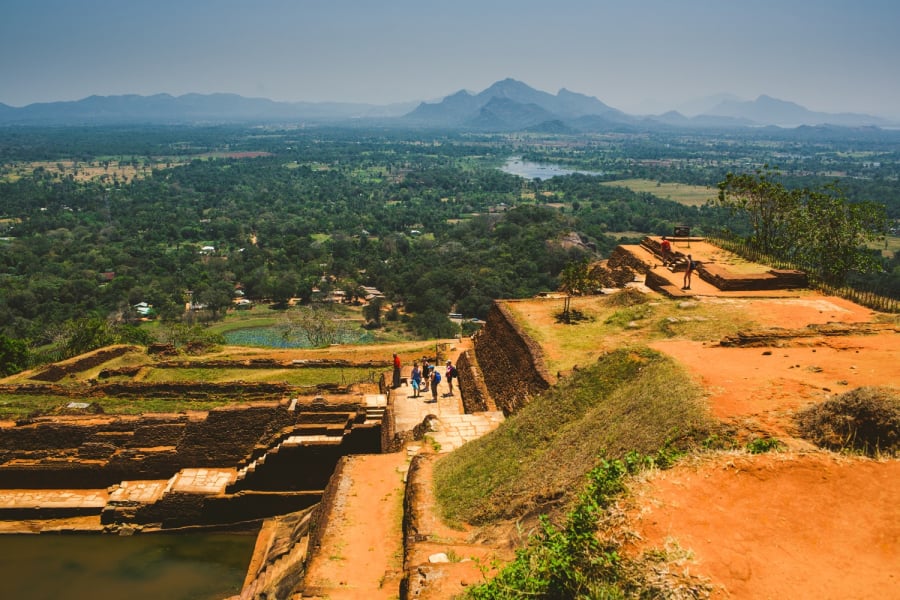
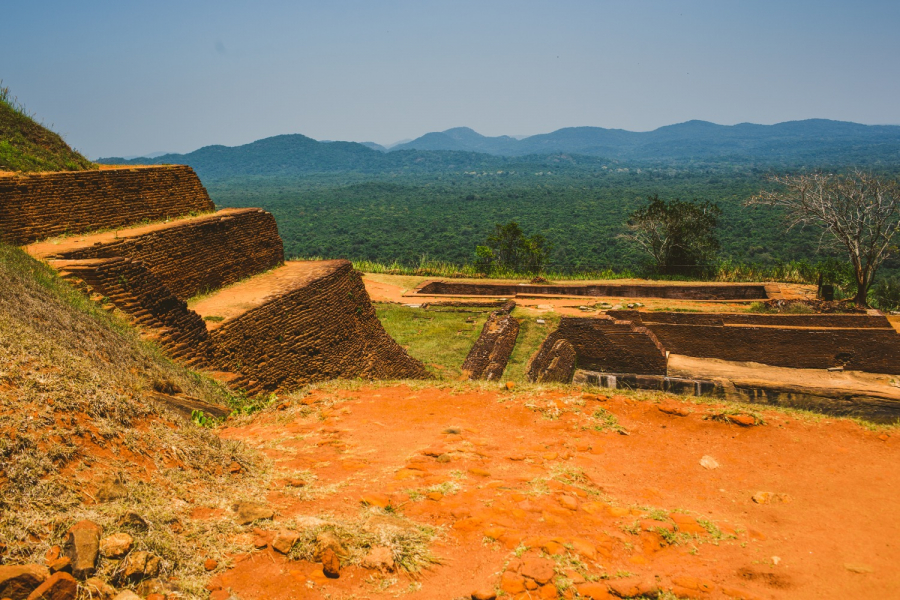
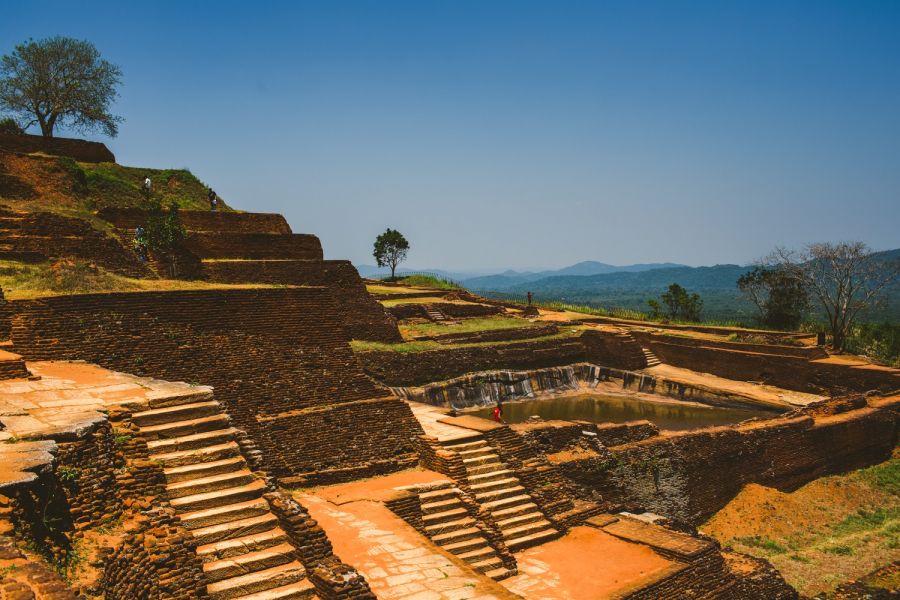
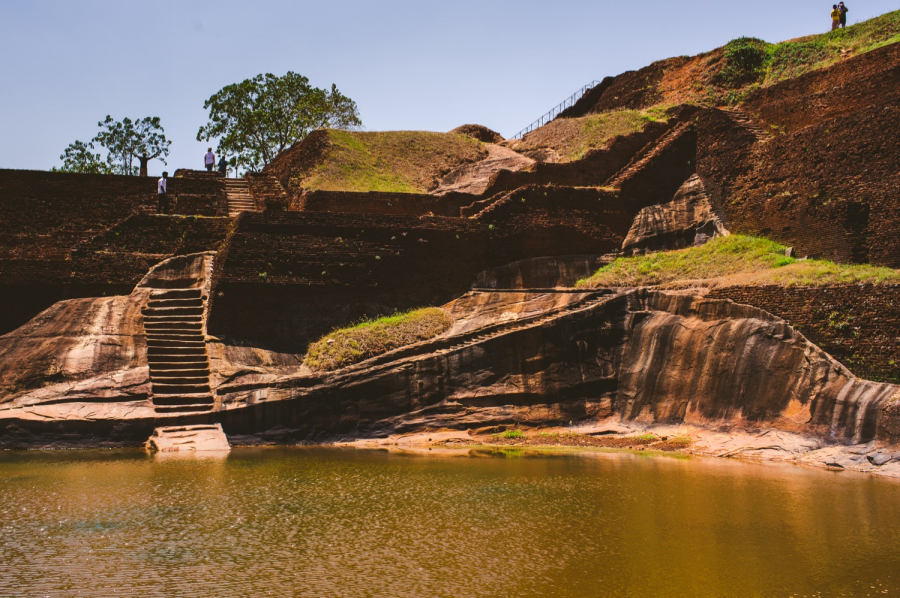

The lake is carved from a single block of rock, looking like a modern infinity pool.
The western wall of Sigiriya has giant frescoes, 140 m long and 40 m high, carved in stone during the reign of King Kasyapa I, depicting Sigiriya beauties. The identity of these models remains a mystery, however, it is believed that they were concubines or priestesses performing religious rituals. It is estimated that there were once 500 paintings in this area. However, today only about 22 paintings remain, of which some are quite intact with bright and vivid colors. These paintings are considered the origin of the figurative style that has lasted for centuries and are also masterpieces that people today cannot help but admire. The graceful lines in the paintings are said to resemble the Ajanta painting style, India.
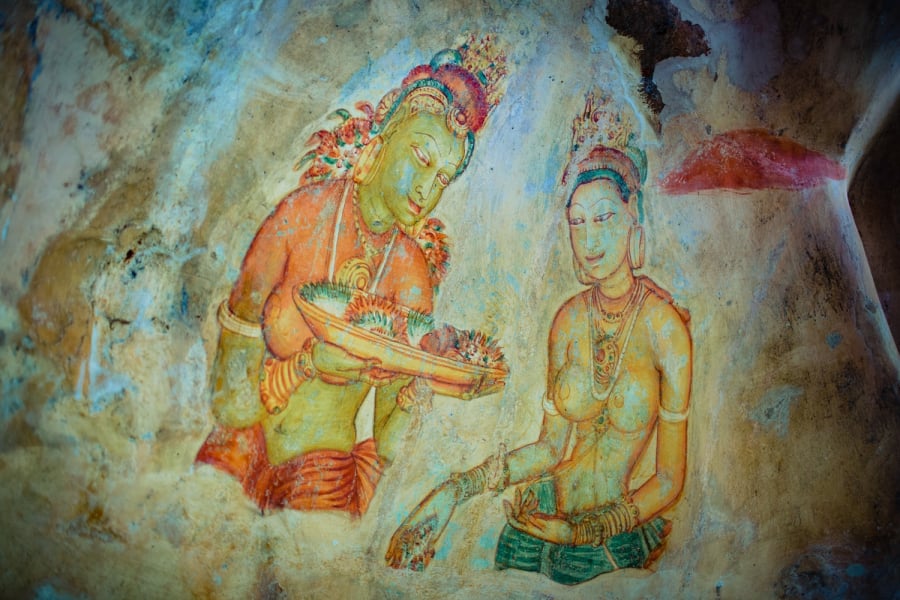
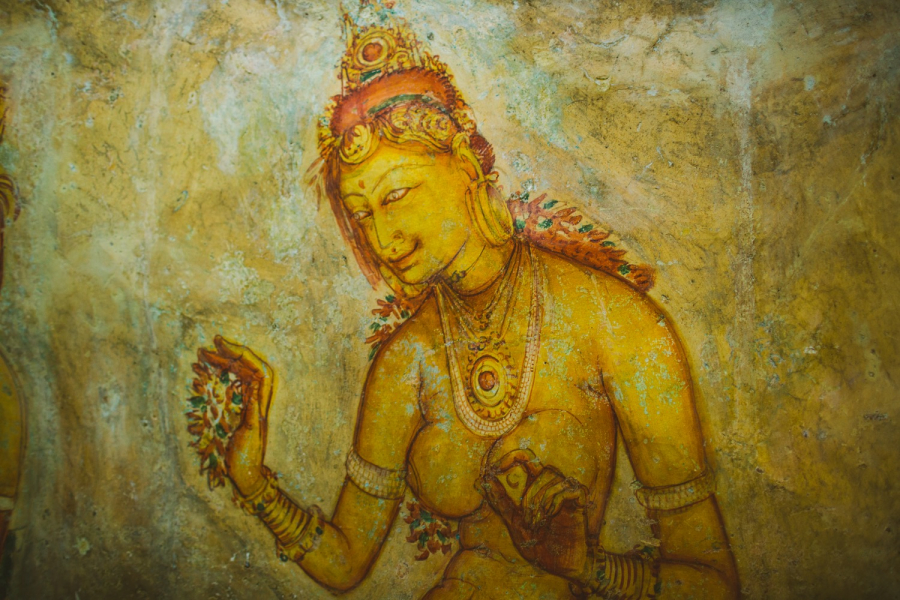
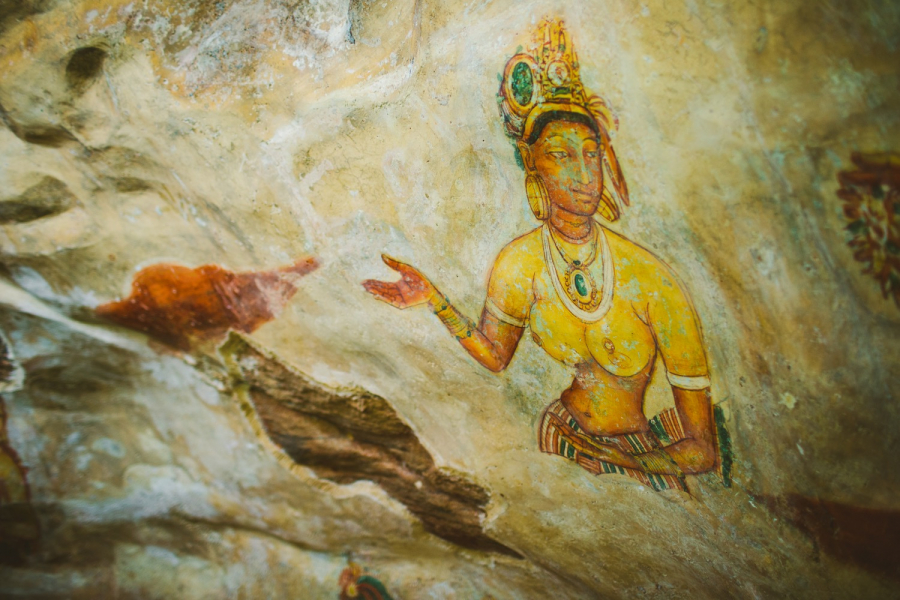
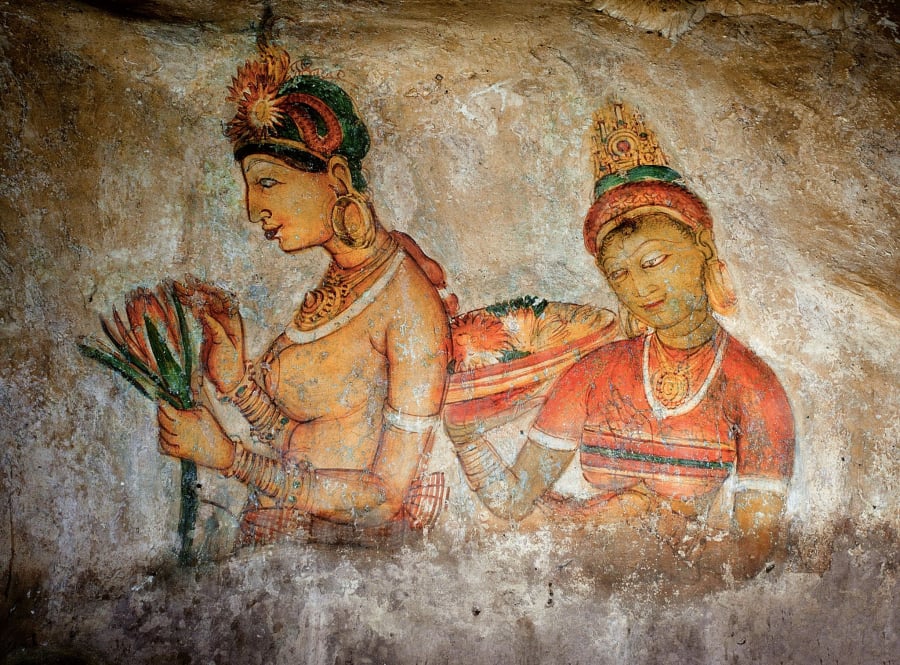
Giant frescoes depicting Sigiriya beauties
On the walls, there are also poems carved on stone by visitors from all over, known as Sigiri graffiti, the oldest texts in the Sinhalese language. Therefore, this place is considered the greatest legacy of the ancient capital under the reign of King Kassapa I.
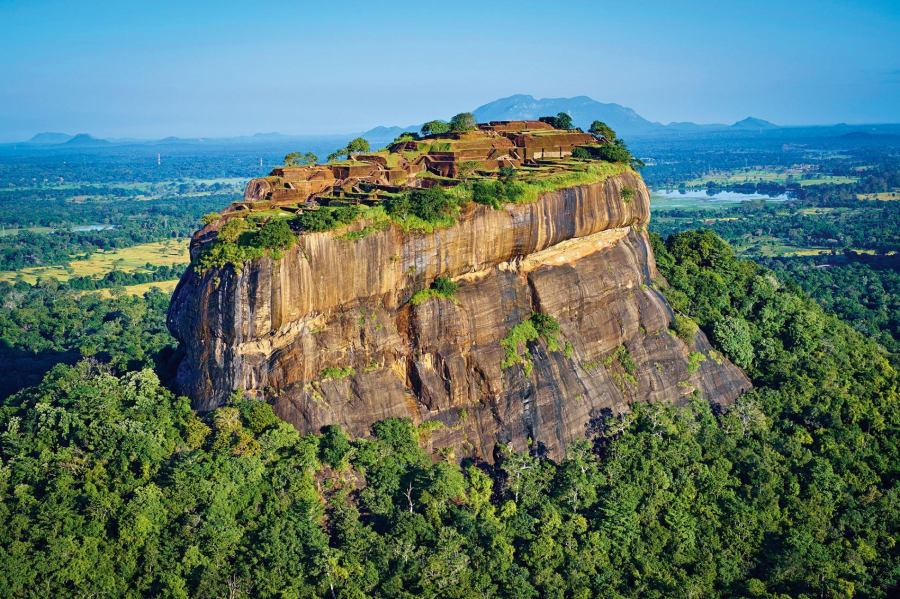
Sigiriya is considered the 8th natural wonder of the world and is a top tourist attraction in Sri Lanka.
In 1982, UNESCO declared the ancient city of Sigiriya in Sri Lanka a World Cultural Heritage site, requiring strict protection. Although it is no longer an intact palace and fortress, with careful preservation, this place is considered a perfect ancient city with a hydraulic system that still works to this day. The precious remains of Sigiriya are enough to see the extraordinary strength and creativity of the ancient Sri Lankans.




















.jpg.jpg)

.jpg_3.jpg.jpg)



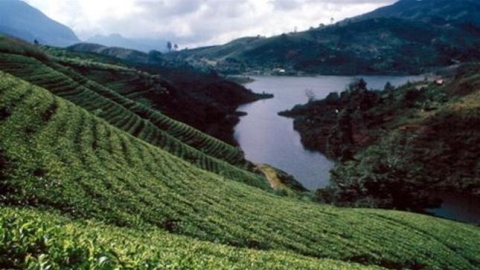
.jpg_3.jpg.jpg)






